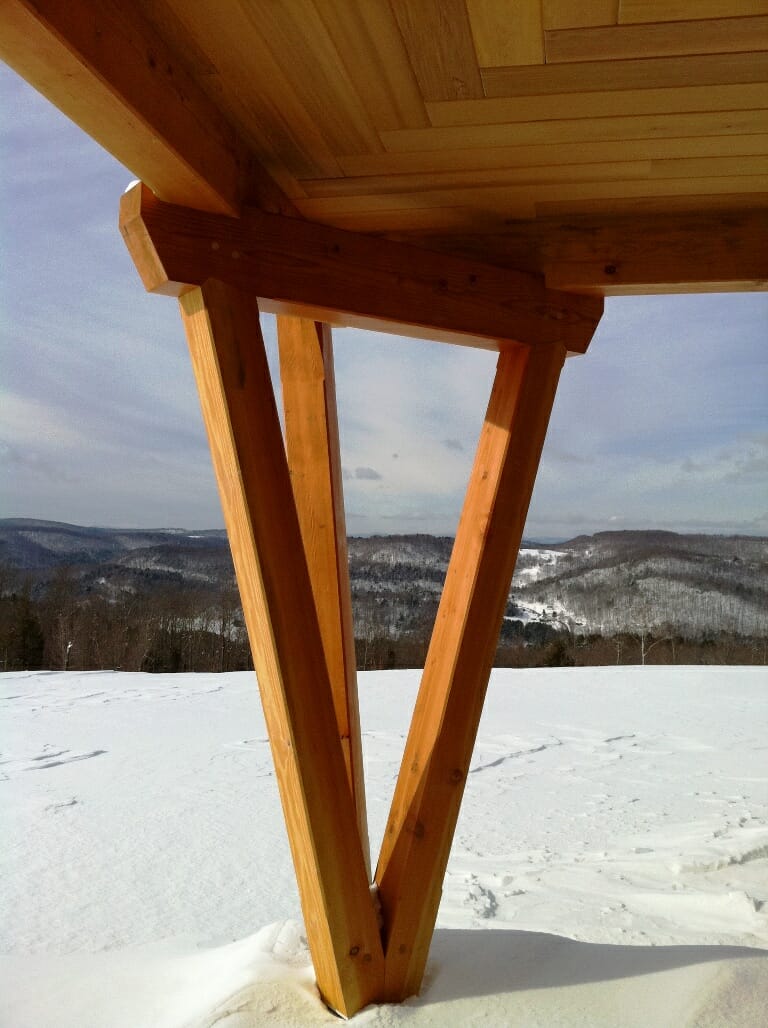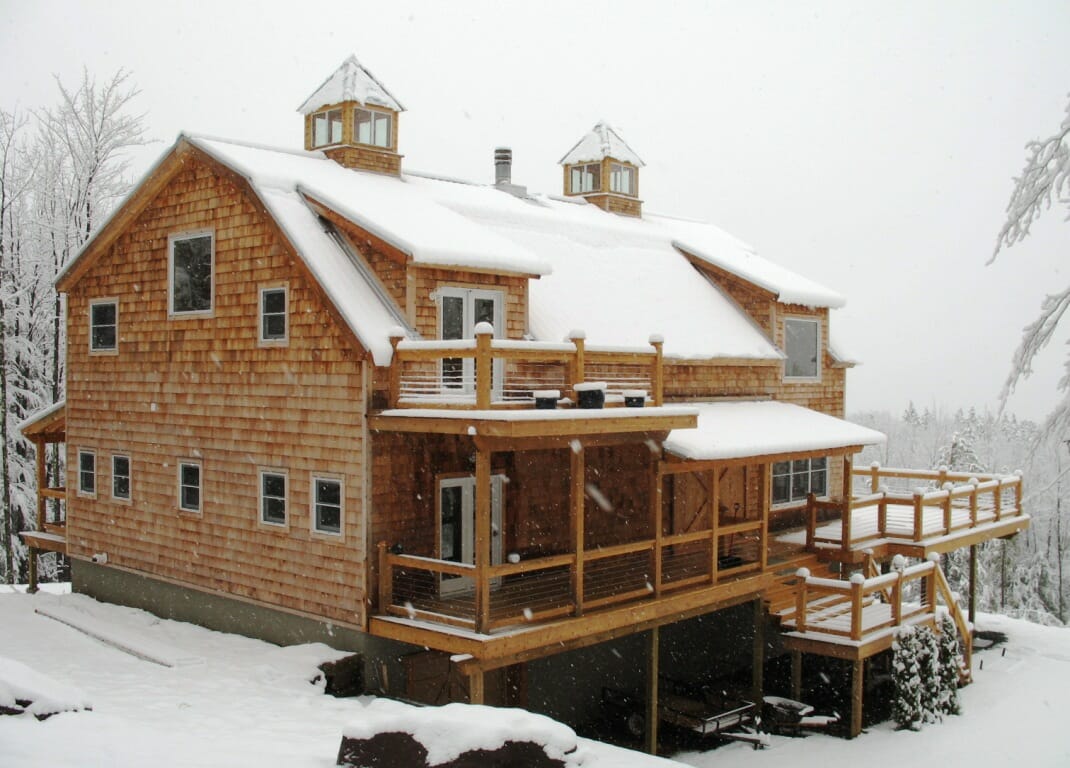The winters in Vermont can be harsh. So Vermont Timber Works understands how important proper and efficient insulation is. Today we’re going to talk about the insulation that we prefer to use in our Timber frames, as well as other insulation options and weatherization techniques that will keep your home warm and cozy even during the lowest of temperatures.
INSULATION
There are many types of insulation out there that you can use to insulate your home. A lot of these options vary in price, ease of installation, and R-value. Some insulation options include:
Compressed Cellulose Insulation
What we at Vermont Timber Works recommend to our clients are SIPs (Structural Insulated Panels).
SIPs are building panels that can be used as walls, floors, and roofs. They are composed of a thick piece of foam sandwiched between two pieces of waffer board. SIPs are prefabricated in factories and are custom made for each building project.
SIPs are an excellent and efficient way to insulate your timber frame home. SIPs have higher R-values per square inch than most other forms of insulation, installing them is relatively quick and easy as they are prefabricated by the manufacturer before arriving on the building site, and they are a green building material. They also have lower rates of thermal bridging compared to stick framed walls. While sometimes more expensive than other forms of insulation, labor costs are dramatically reduced with SIP installation. So once you factor the increased cost of SIPS against the savings on labor, SIPs end up costing about as much as other insulation methods to purchase and have installed. And overall, SIPs will save on energy costs throughout the lifetime of the structure.
Make sure to work with a reputable SIPs dealer such as Foard Panel to make sure that you’re getting the quality product you’re expecting.
After you’ve installed the most energy efficient insulation you might think that’s all you have to do to keep your house warm and dry throughout the winter. But all houses, old or new, can benefit from further weatherization techniques that can keep your energy costs even lower.
WEATHERIZATION
Weatherization is something you can do in your home to prepare for the colder weather. It may seem like a bunch of small, insignificant improvements, but by reducing cracks and gaps in the home that allow warm air to escape and cold air to come in, you can significantly change the temperature inside the home. Proper weatherization will keep your energy costs down while also preventing drafts and cold spots that will make your family uncomfortable.
Caulk
For small cracks and leaks, you can use caulk to seal up areas where cold air may be coming into your home. Check for leaks and consider using caulk around ceiling lights, bathroom vents, and electrical outlets.
Weather Stripping
Put weatherstrips in cracks that are too big to fill with caulk. Put in weatherstrips around windows, doors, around the fireplace, and around attic access panels and doors.
Spray Foam
Spray foam is good for leaks that are too big for caulk or weather stripping. Make sure to use spray foam in a well-ventilated area and do not use around electricity.
Insulate Plumbing
You can get foam insulation sleeves that wrap around your pipes to keep them warm and prevent them from freezing. You can also get a water heater tank cover that keeps the water in the tank warmer by preventing it from losing heat.
Before any do-it-yourself home improvement, make sure you read the instructions on the materials you intend to use, and consult with an expert if you have any questions.



